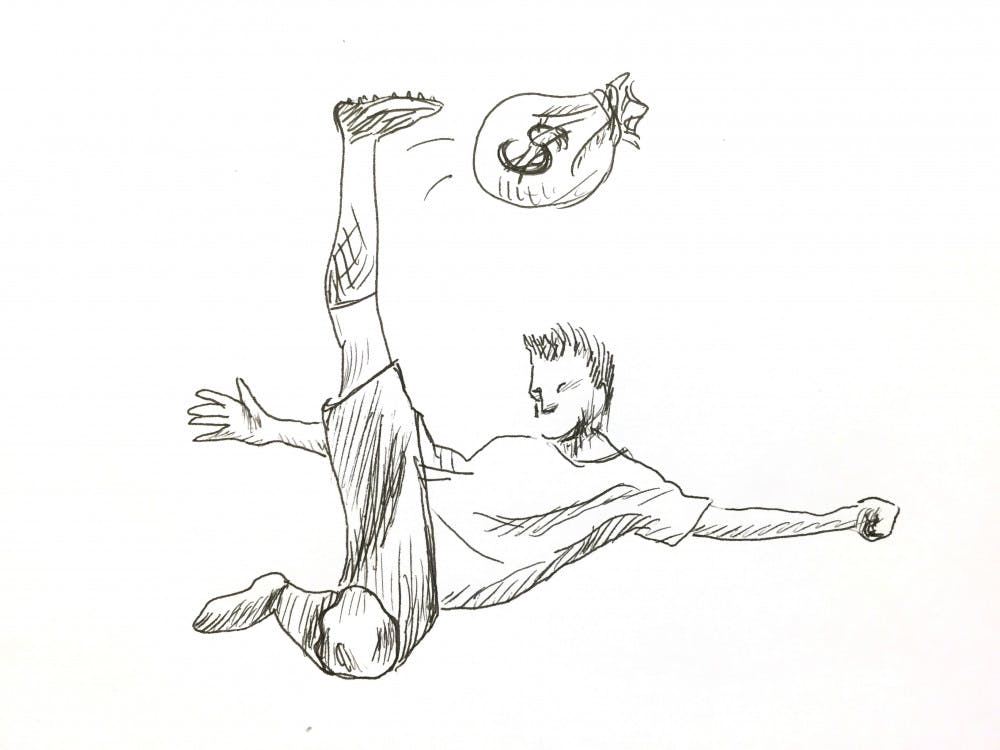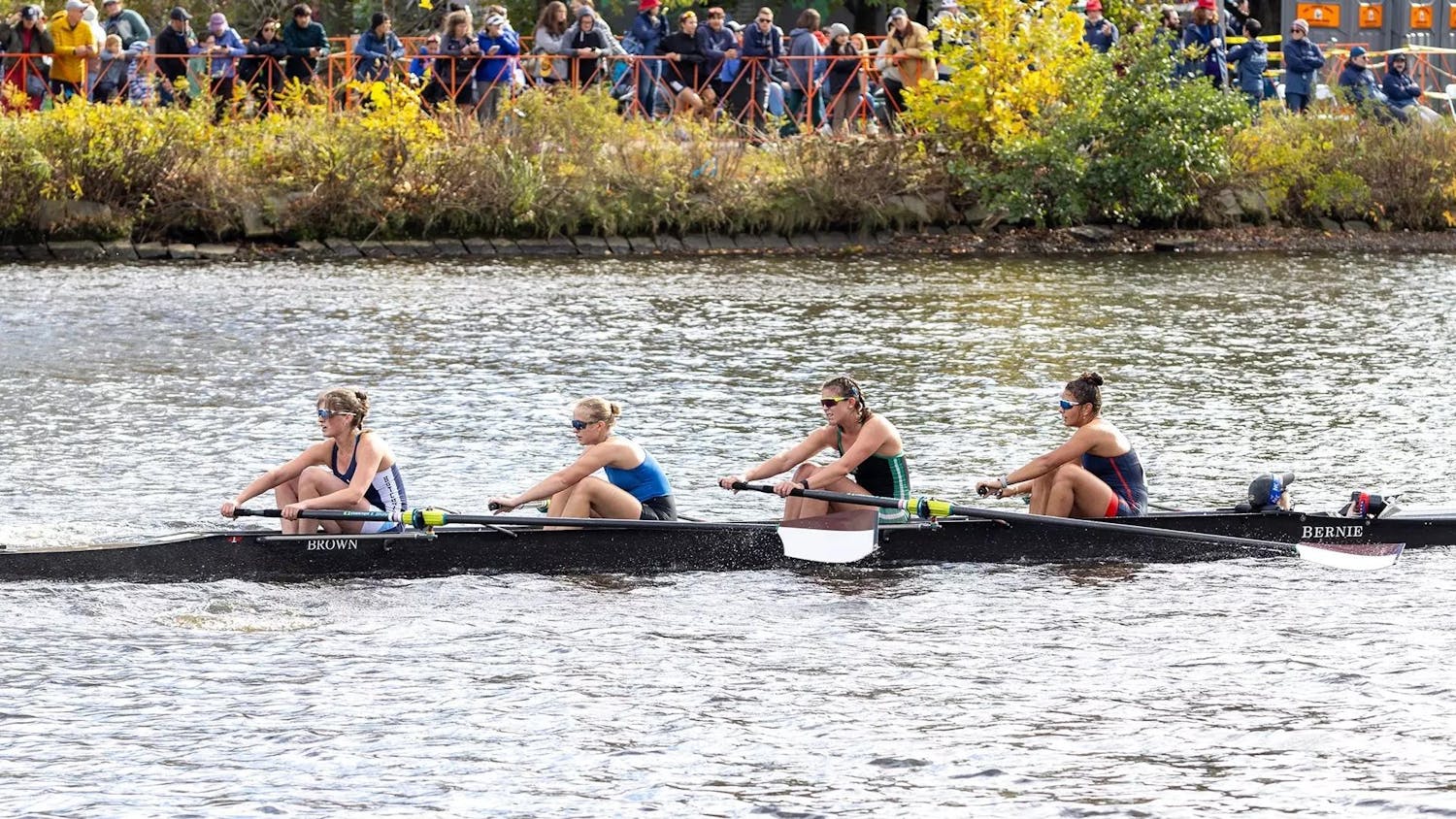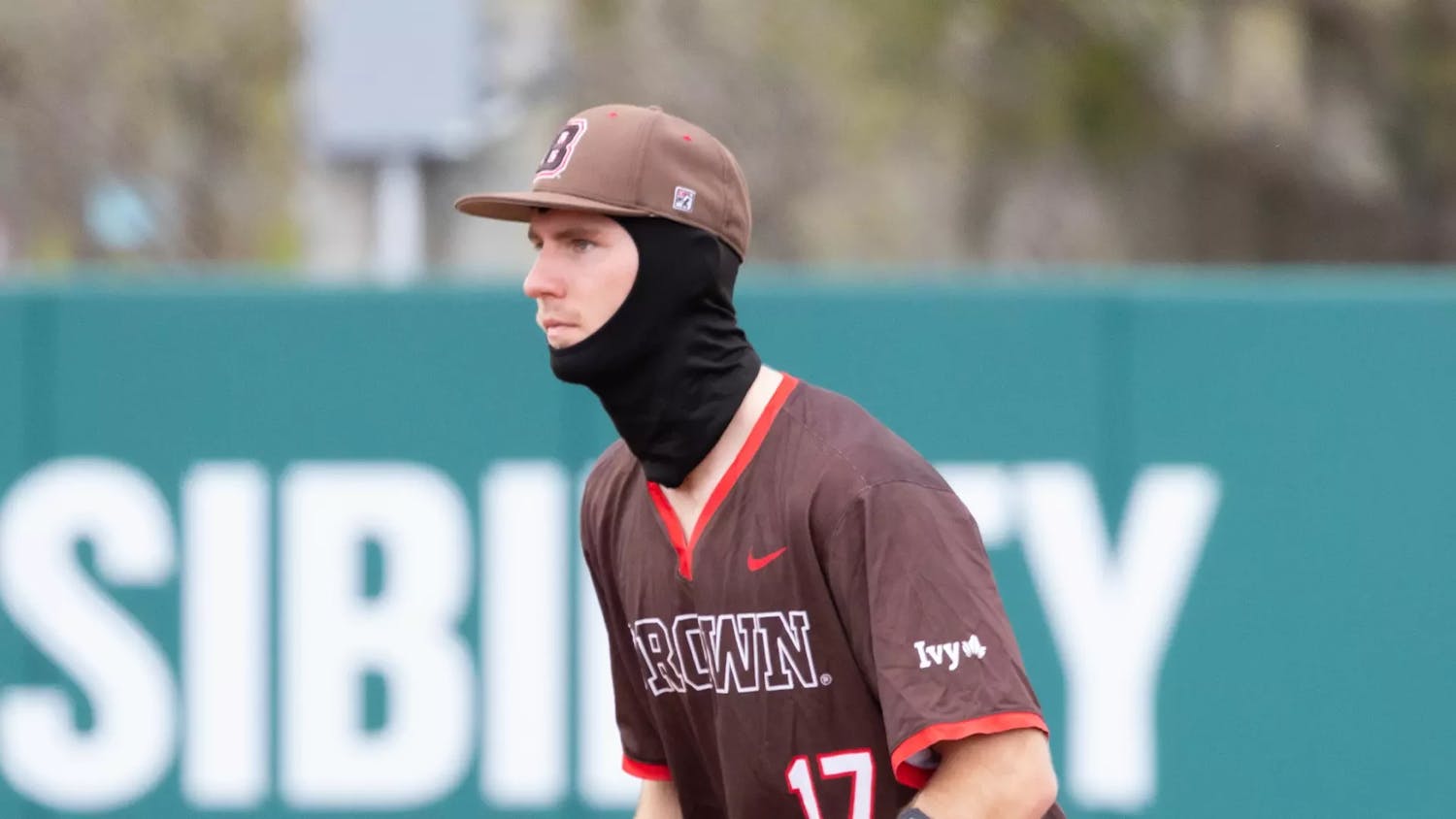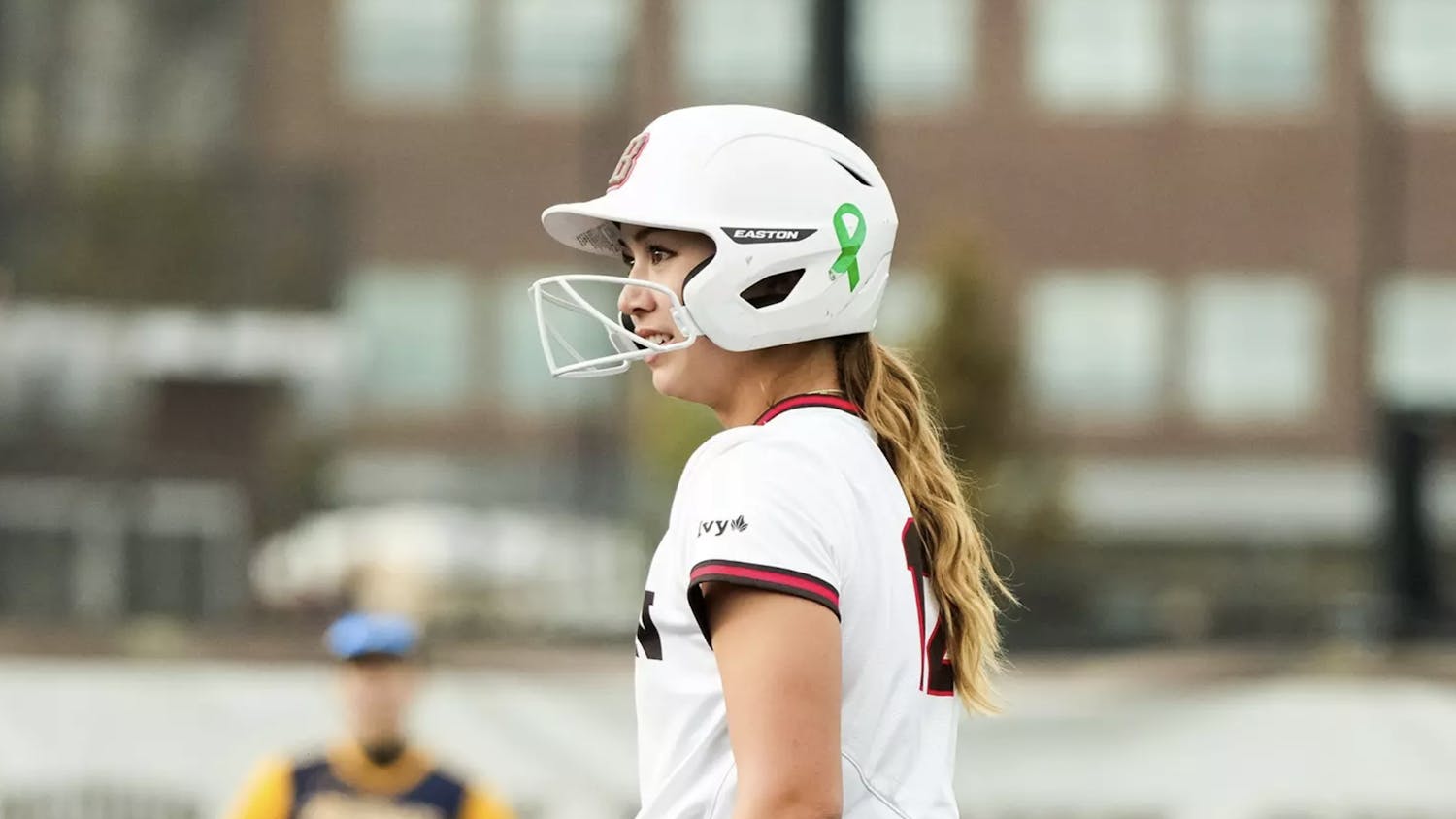The University hosts 900 athletes and 37 varsity teams, making it the fourth-largest athletic program in the country and the largest women’s program, according to the athletics department website. For an academically-oriented school known primarily for success in the classroom rather than on the field, supporting such a wide variety of sports teams is an impressive feat.
According to data from the Department of Education Office of Postsecondary Education, the operating expenses for Bruno’s men’s teams in reporting year 2013-14 was $2,115,524, while the operating expenses for women’s teams was $1,394,367. Operating expenses — the game day costs directly associated with a team’s operations — are only one part of a team’s overall expenditures. In total, the budget for athletics was $19,547,026 in 2013-14.
“A team’s operating budget is made up of personnel costs, of team travel, team recruitment, equipment and uniforms,” said Athletics Director Jack Hayes. “Those are probably the most significant costs of an operating budget for any team,” he said, adding that these costs are “annual expenses that remain fairly consistent from year to year.”
Per participant, the teams with the highest operating expenses were men’s basketball at $16,061 and men’s ice hockey at $12,034. The sport with the greatest difference in per capita operating expense between men’s and women’s teams was ice hockey, with a gap of $6,781 per player and a total difference of $185,276 in operating expenses. The team with the largest budget was football, though the per participant expense was much lower at $5,380, on par with teams like men’s golf, men’s tennis, gymnastics and women’s ice hockey.
Though teams like basketball and football demand higher operating expenses, they also bring in disproportionate revenue compared to other varsity programs. The men’s and women’s basketball programs generated almost $1.5 million, while the football team is credited with over $2 million in revenue. Men’s teams bring in about one-and-a-half times more revenue than women’s teams, which may partially explain the differences in expenses.
“Every program has a fundraising target, which ends up being a portion of their operating budget,” Hayes said. “I’ve never really looked at it as ‘how do the men’s programs do versus the women’s?’ … There are programs on both the men’s side and the women’s side that are very active in the fundraising efforts and that have parents and alumni that are very involved.”
In terms of how and where the budget is distributed, head coaches for men’s teams earned $97,255 on average in 2013-14, while head coaches for women’s teams earned $66,006 on average. The total amount of money spent on coaching salaries — both head coaches and assistant coaches — was $4,971,420, or 25 percent of the total expenses. Recruiting expenses accounted for less than four percent of total expenses, while salaries plus game day expenses accounted for 43 percent of total expenses.
The athletic department’s strategic plan emphasizes an increase in the competitiveness of Brown’s sports teams and illustrates the correlation between athletic expenses and success.
For example, the women’s rugby team, one of only two Ivy rugby squads with varsity status, has benefitted from its increased resources compared to its competitors. In particular, access to the University’s athletic trainers as well as higher priority when scheduling practices were noticeable benefits of the shift, said Head Coach Kathy Flores. The difference between the varsity teams and the club teams is noticeable in rugby, she added. The squad won the Ivy title this year, crowning it as one of Brown’s most successful programs.
“Some teams that we play in the Ivy League can’t afford to bring a trainer with them — they might have to drive their own cars,” Flores said. “When you become a varsity team, the University is a little more on hold to support you in the ways that other NCAA teams are supported.”
Finances also played a role in the elevation of the squad, she said.
“It did help that we had a couple big donors that helped get us on the map … but I’m sure there are other factors that come into play when you elevate a sport.”
The strategic plan listed the 2013-14 total expenses directly related to the teams’ individual needs — or the chunk of the approximately $19 million that can be traced directly to varsity athletics programs — as being $11,285,796, ranking Brown last in the Ivy League. Yale and Harvard spend the most at approximately $18 million and $16 million, respectively.
Former Provost Mark Schlissel P’15 planned on directing $1.1 million of the University’s budget toward paying coaches closer to the average Ivy League salary, The Herald reported in 2012. In 2013, the average annual institutional salary per head coach was $111,294 for men’s teams and $82,064 for women’s teams, placing Brown far below the league average, according to the Department of Education’s Office of Postsecondary Education. Barring exceptional changes in salaries since then, the salary trends for Brown coaches trail markedly behind their peers.
The 2012 increase in funding for coaching salaries was part of a much larger University effort to inject funds into a lagging athletics department, partially in response to a 2011 athletics review that revealed Brown’s below-average pay. The University directed $42 million toward significant renovation projects as well as long-term athletics enhancement, The Herald reported at the time.
As the strategic plan indicates, Brown’s teams had the lowest average league finish between 2005-2014. In order to address Brown’s lack of competitiveness, the report recommended addressing “coaching salary deficits, facility needs and financial aid matching.”
“The more resources that you have available, the more opportunities that there are for any of our programs,” Hayes said. “If we’re able to generate financial resources that can allow teams to recruit where they need to recruit and to compete against the teams that are important to compete against, then we would be setting programs up hopefully for a level of success.”
Charitable giving to Brown athletic programs is directed by the Brown University Sports Foundation, which is a part of the Division of Advancement. The Foundation’s goal for fiscal year 2015 is to raise $3.6 million in annual use giving, which directly funds programs’ operating budgets.
Hayes called the job of fundraising on the team level a “shared responsibility that involves communication with donors, with alums, with parents.” Teams often put on events to independently supplement their budgets.
For example, the Brown Bear Golf event raised a net total of $32,050, according to Brown’s 990 Form, a reporting form for nonprofits. The football team hosts a similar event to boost its fundraising efforts.
Though coaches are not directly involved in administration over the budget, fundraising is a part of their role, said Paul Cooke, head coach of men’s crew.
Many teams also participate in fundraising efforts for outside causes. Both crew teams are involved with Pull for a Cure, which raises money for breast cancer research.
In addition to helping orchestrate fundraising to meet each team’s operating needs, the Sports Foundation also raises funds for special projects such as men’s crew’s travel to the Henley Regatta in England and renovations for lacrosse locker rooms. Long-term support from the Foundation in the form of endowments for coaching chairs or various budgets, such as recruiting or travel, can also grant teams financial stability for years to come. The cost to endow a head coaching chair of a Brown sports team is $1 million or more.
The Foundation’s philanthropy supplements the athletic department’s budget by funding about half of its spending, according to the University’s annual giving website.
“The programs that are most successful in the fundraising area are the ones that cast the widest net of prospective donors and people that are interested in supporting the programs,” Hayes said.
“People like to donate to something where they feel a part of it,” Flores said.
Coaches credit the Sports Foundation, the University and donors with providing many of the resources that contribute to their success.
“We’re so appreciative of all the people who have helped build this program over the years,” Cooke said, whose position has been endowed through the Sports Foundation. “We clearly couldn’t be in the competitive situation we are without the help of so many people.”





